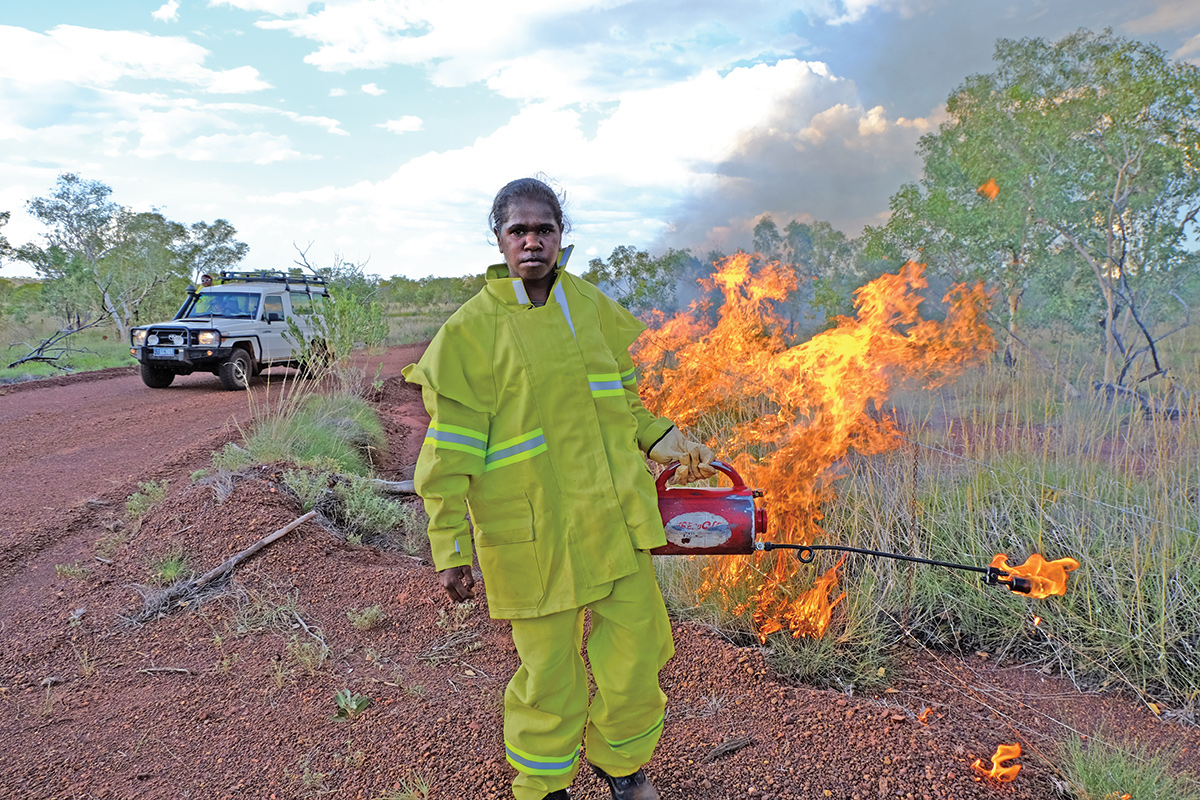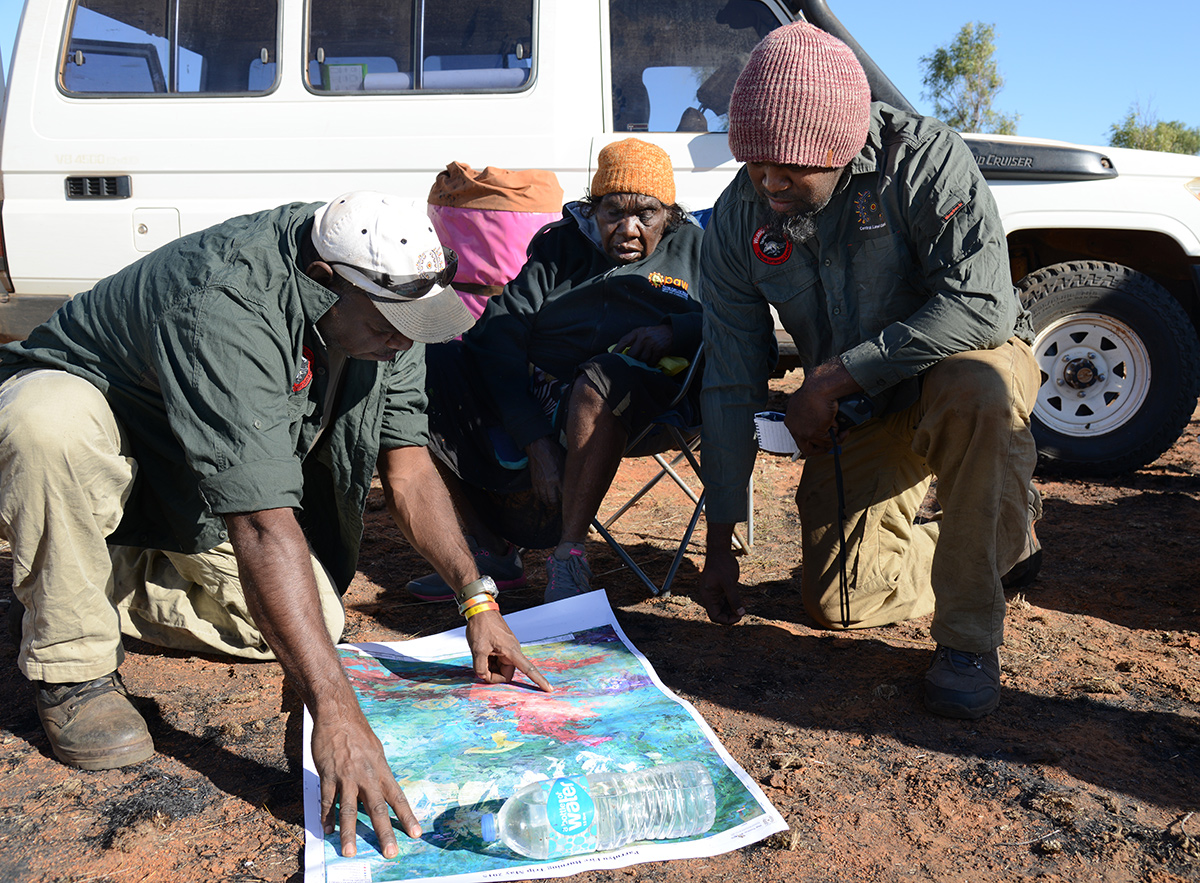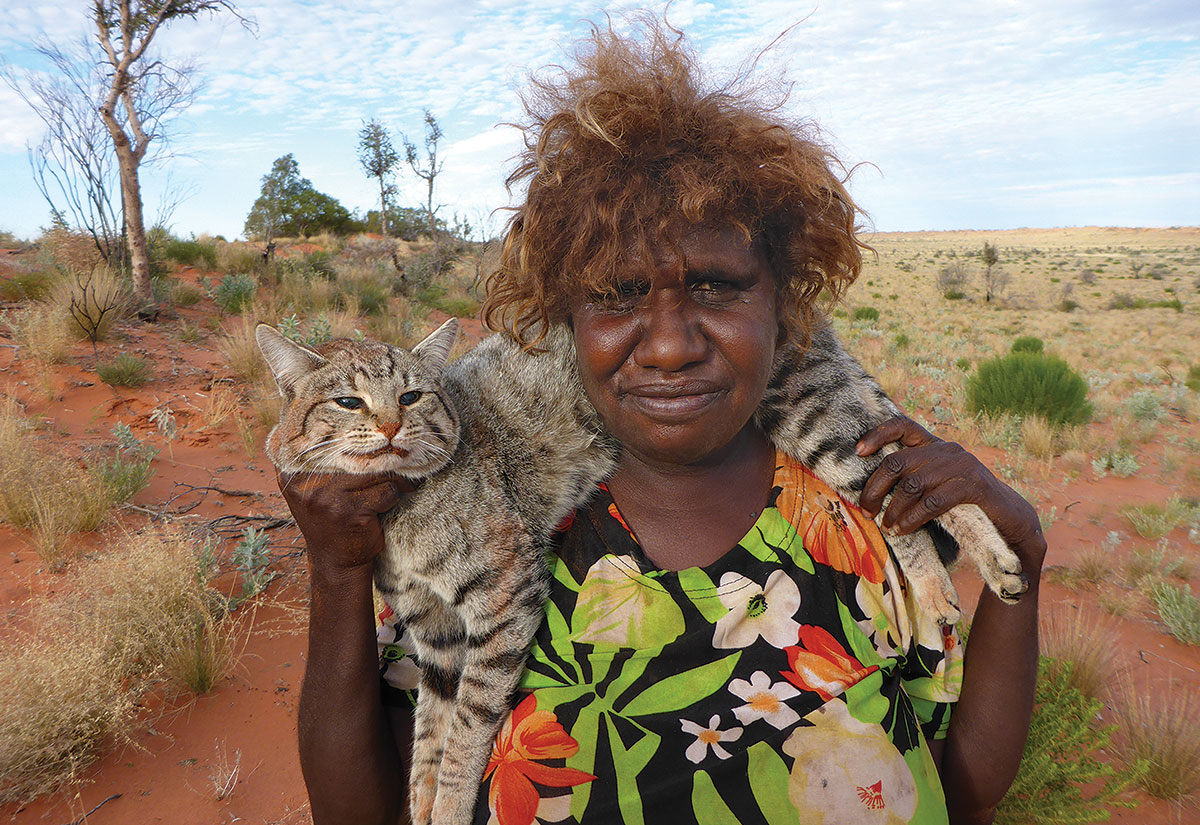MANAGING FIRE
We work with traditional landowners and community residents to combine traditional and modern burning practices to protect lives, assets, sacred sites and native plants and animals from out-of-control wildfires, and in some areas to generate carbon credits.

Our vast region, from the dry spinifex sandplains in the south to the savannahs of the north, was partly shaped by nomadic Aboriginal people as they traversed their country, hunting, gathering and burning as they went.
From early last century, as Aboriginal people settled in remote communities, vegetation that used to burn regularly grew unchecked across massive expanses of remote country, resulting in out-of-control fires during the hot season.
Our rangers and other land management staff work with Aboriginal people to protect human life, community assets, sacred sites and the biodiversity of more than 417,000 square kilometres of Aboriginal land from the devastating effects of these wildfires.
They combine the traditional owners’ age-old knowledge of fire with current fire management techniques and equipment, working with fire agencies, neighbours, Territory and local government and other bodies.
Additional benefits
Our fire management program creates benefits that go beyond fuel reduction and the resulting fire mitigation. It gives traditional owners continued access to remote areas so they can maintain their cultural and spiritual obligations to their country. For example, aerial prescribed burning is an opportunity for elders to visit remote cultural sites and teach younger family members about these places, critical for their sustained observance and thus protection.
In inaccessible parts of Central Australia, such as the Tanami and Simpson deserts and the Petermann Range region, we burn an ever-changing mosaic of small areas during the cooler months. Over time, this pattern of controlled burning decreases the size and frequency of much hotter and more damaging spring and summer fires and protects biodiversity. It allows selected patches of vegetation to reach an age where species can shelter, while recently burnt patches experience fresh growth to feed the animals. Practised in the open savannah country, it’s reducing carbon emissions and earning carbon credits.
In more populated areas, our rangers maintain linear firebreaks along tenure boundaries. This aims to prevent bushfires from jumping the boundaries while allowing the rangers to burn patches of Aboriginal land within. Yet there are approximately 14,000 kilometres of Aboriginal land trust boundaries with other forms of land tenure in the CLC region, making it impossible to burn fire breaks around all Aboriginal land.
Planning

Areas of high fire risk and access to these areas change from year to year. We plan fire management activities carefully to ensure we allocate our limited resources to areas with the greatest need and/or risk. We achieve this through a number of planning and governance for:
Regional Aboriginal fire management committees (the warlu committee of the northwest region and the waru committee of the southwest) which meet annually to discuss the previous fire season and plan for the next. The committees, whose names mean fire in local languages, receive resourcing and planning advice from fire authorities. Indigenous protected area (IPA) management committees meet twice yearly to debrief and plan burning operations in our region’s several IPAs. We also participate in the Northern Territory Bushfires Council and regional bushfire committees.
Resourcing
Central Australia is vast and funding for fire management is spread thinly. Our work assists fire authorities with fire mitigation, however we are not a firefighting agency and do not lead fire suppression operations.
The Commonwealth government funds most of our fire management work, and grants from the Aboriginals Benefit Account under the Aboriginal Land Rights (NT) Act along with the Indigenous Desert Alliance pay for the remainder. We are investigating further sustainable carbon abatement projects to deliver an additional funding stream for fire management and contribute to global efforts to address the huge challenge of climate change.
MANAGING FERAL ANIMALS

Central Australian plants, animals and sacred sites are under constant pressure from feral camels, horses, donkeys, cattle, cats, foxes and cane toads.
The most widespread of the feral plant eaters in central Australia are camels. Tens of thousands of them are destroying native vegetation, water sources, sacred sites and infrastructure in the desert. Precise numbers are elusive as the last camel survey was in 2013. However, there is no doubt that camels remain a major threat to the biodiversity of Aboriginal land and livelihoods, especially in our region’s west, southwest and southeast
Traditional landowners are increasingly concerned about feral camel impacts on water holes, springs and soakages, the decline of important bush food and medicine plants, the threat camels pose to native animals competing for precious surface water, erosion and damage to water and other infrastructure in and around communities and outstations.
While Aboriginal people hunt camels for meat, they do not like to see them culled and left to waste. Many believe that feral animals have earned a right to live on and share their country through their long association with it.
We honour this perspective by raising their awareness of the impacts feral animals have on the country and its native plants and animals. And we facilitate community decision making about camel management, including harvesting licenses. We are building the capacity of our rangers and other community members to participate in camel population monitoring and control. This approach is making informed consent for culling increasingly possible.
While culling remains highly contentious and we would all prefer a better solution, it is the only practical way to remove a large number of camels quickly and humanely. Where we receive consent, we coordinate aerial culls in such a way as to limit distress to community residents and camels alike.
We will continue to consult and educate to ensure that camel control operations on Aboriginal land occur only with the prior informed consent of our constituents.
Horses and donkeys
We work with our constituents and the Northern Territory We work with our constituents and the Northern Territory government to control feral donkeys and horses, targeting areas where feral population numbers have increased or community members have reported impacts. In dry times, horses and donkeys congregate around water holes, putting pressure on native animals and threatening sacred sites. As with camels, management options are limited and views about aerial culling differ. We have facilitated agreements between traditional owners and the government to allow for the aerial harvest of feral donkeys and horses for pet meat. And we have helped communities and small Aboriginal pastoral enterprises to muster and sell feral horses, scrub cattle and donkeys.
Foxes and cats

Some Aboriginal people in our region hunt feral cats and foxes for food, medicine and to aid research and are very skilled at tracking them for many hours. Despite their efforts, large numbers of these predators are devastating native, often threatened, mammals, birds and reptiles.
We have helped the NT’s Parks and Wildlife Commission to trial specialised bait stations designed to poison foxes while restricting dingoes’ access to the baits. The trials, based on the different snout shape of foxes and dingoes, had limited success and have not been rolled out more widely. Dingoes play a critical role in controlling cats and foxes. Healthy dingo populations coincide with healthier populations of vulnerable native animals such as bilbies and great desert skinks. With limited resources, our feral animal management program is working strategically towards the health of native species and that of our constituents in the face of this significant problem.


